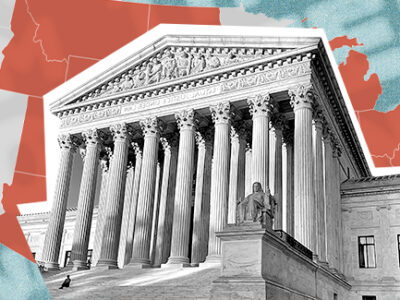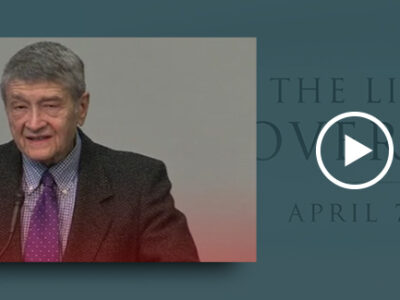In January 1954, in a speech before the New York Council on Foreign Relations, Secretary of State John Foster Dulles articulated the essence of the Eisenhower administration’s national security policy. Dulles warned the Soviet Union and Communist China that future aggression, like the one they so recently supported in Korea, might be met “by means and at places of our own choosing.” In contemporary parlance, “Mess with us and we’ll nuke you ‘til you glow.”
That threat was credible in 1954 because the American atomic stockpile vastly exceeded that of the Soviets. Also, Hiroshima and Nagasaki glowed incandescently in recent memory. No one mused that only a handful of Russian and Chinese citizens belonged to the Party or argued the unfairness of holding entire civilizations hostage to the behavior of political elites. Thirty-eight thousand dead American soldiers in Korea proved Moscow and Peking could act in ways detrimental to the United States. Deterrence, a matter of means and will, worked because our enemies knew Americans possessed both.
In the early 1960s novella “Dr. Strangelove,” made into a classic black-comedy movie by Stanley Kubrick, a Kissingeresque nuclear strategist defined deterrence as “the art of creating in the mind of the enemy the fear to attack.”
“Something more horrible than anything we have seen before” is in the offing warned Josef Bodansky, former director of the Congressional Task Force on Terrorism and Unconventional Warfare, last month at an international conference on terrorism held in Jerusalem. According to Bodansky, the re-election of President Bush signaled Osama bin Laden that the American people solidly support the War on Terror. This prompted radical Islamic clerics and what Bodansky dubbed, “the elites of the Arab world” to approve a far more catastrophic attack than the one al Qaeda undertook on September 11, 2001.
Deterrence is difficult when the enemy is an amorphous terrorist group with no identifiable capital or specific homeland. It also is hard to deter fanatics longing for martyrdom. Difficult….not impossible.
Fact is many Arab clerical and political elites (along with the French) would like to see America humbled. And while most Muslims are not Islamofascists, Bodansky estimates that a quarter million trained jihadists are anxious to kill and die for the cause while up to five million others want to help. According to Bodansky, upwards of fifty million Muslims support al Qaeda. Given the population of the Arab world, that’s about the same proportion of Arabs backing Osama as Germans who supported Hitler or Japanese who backed Japan’s military regime.
There are, however, millions of Muslims willing to co-exist with the West. After all, it is the Americans and Europeans who buy their petroleum, thus providing the accoutrements of modernization, everything from the Land Rovers and Bentleys so evident on the boulevards of Abu Dhabi to the modern hospitals of Riyadh and Bahrain. Ultimately they prefer life, even living with infidels, to instant incineration. Therein is the efficacy of deterrence.
The extent to which political and clerical elites have given al Qaeda a green light to strike America rests on their assumption that a rogue terrorist group does not present a viable target for retaliation in kind. They should keep these words in mind, “By means and at places of our own choosing.”
Riyadh, Damascus, Teheran and Tripoli should be made very aware that they may pay the price for any nuclear or chemical/biological attack on America. Since al Qaeda and other Islamic terrorist groups like Hezbollah and Hamas belong to them, we hold them responsible for their actions.
World War IV, our war with al Qaeda and its supporters, is a total war the outcome of which will decide the world’s culture for the remainder of the century and beyond. Hundreds of thousands, if not millions, of young Muslims are jihadists because the so-called “Arab street” hates America. They are never going to like or respect us. Therefore, it is imperative that they fear us.
With the connivance and support of some in the Arab world and elsewhere, al Qaeda may well acquire weapons that can kill hundreds of thousands of Americans. What al Qaeda cannot do, at least at this point, is win a war of mass destruction. The United States, on the other hand, can bomb the Muslim Middle East back to days of the Prophet…quite literally, back to the seventh century. Influential clerics and those Arab elites who hold the reigns of al Qaeda need to understand that. The art of deterrence is to create in the mind of the enemy the fear to attack. Ultimately, the efficacy of deterrence is a matter both of means and will. We Americans have an abundance of both.




